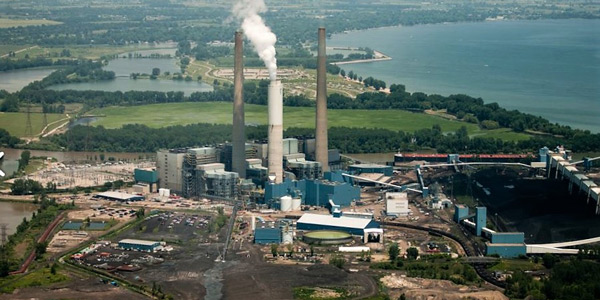By Amanda Durish Cook
DTE Energy is making its last stand in a seven-year battle to avoid paying out millions of dollars in penalties after being found to have improperly accounted for emission increases stemming from upgrades performed at a coal plant.
The Michigan-based utility filed a writ of certiorari last week asking the U.S. Supreme Court to review a lower court’s ruling in favor of EPA in the case, in which the agency argued that the company upgraded Unit 2 at its Monroe plant without considering the resulting increase in emissions.
The 6th U.S. Circuit Court of Appeals declined to rehear the decision, upholding EPA’s power to halt construction at power plants the agency believes have not properly accounted for possible added air pollution (14-2274 and 14-2275).
“Left standing, the decision … threatens to paralyze substantial maintenance projects throughout the nation,” DTE said in its petition. The company filed successfully in May to delay the issuance of a mandate in the case while it petitioned the high court.
EPA sued DTE in 2010 after the utility replaced boiler components at the Monroe plant without installing additional pollution controls. The agency alleged that DTE violated the Clean Air Act’s New Source Review (NSR) provision, which is designed to protect air quality when industrial facilities are newly built or modified.
DTE maintained that the higher emissions from the Monroe plant were a product of demand growth and not caused by the boiler improvements. The company also claimed the $65 million project was routine maintenance exempted from NSR permitting.
EPA called the project a major overhaul that should have included new pollution controls and asked for civil penalties of up to $37,500 per day. By 2014, DTE had installed four selective catalytic reduction units and four flue gas desulfurization units at the plant for a total of about $2 billion.
The company maintains that it properly evaluated whether the upgrade would trigger the “costly and time-consuming” NSR permitting process, but it found no projected emissions increase.
“To add insult to injury, the government seeks to penalize DTE for failing to make that demonstrably inaccurate preconstruction emissions projection,” the company said in the petition. The utility also called EPA’s suit “an Orwellian type of enforcement action.”
In a late July earnings call, DTE CEO Gerard Anderson reaffirmed the company’s recent public announcement to reduce its carbon emissions by more than 80% by 2050 by eliminating coal generation. Under the plan, the 46-year-old Monroe station would cease operations in 2040. DTE has not said how it plans to replace the generation.





